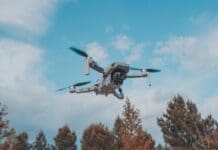This post is also available in:
 עברית (Hebrew)
עברית (Hebrew)
Vigor Medical is a graduate of the INNOFENSE Innovation Center operated by iHLS in collaboration with IMoD. This unique acceleration program removes entrance barriers to the technological ecosystem, turning startups into mature, leading companies while connecting them with relevant investors, which is designed to strengthen the links between the civilian and defense markets via the collaborative development of the technologies, thus advancing and improving their integration in both markets.
Blast and abdominal injuries are among the most difficult to diagnose in the field. While a soldier may appear unharmed externally, internal bleeding in the abdominal cavity can become life-threatening within minutes. On the battlefield, amid stress, noise, mud, and uncertainty—medical teams must make split-second decisions: should the wounded be evacuated immediately or can evacuation be delayed? Triage is critical in determining evacuation priorities. Today, such challenging decisions are also based on ultrasound assessments by personnel in the field who are not ultrasound specialists.
This is where Vigor Medical comes in.
The company is developing an AI-based tool designed to interpret portable ultrasound findings and assist in life-saving decision-making in the field. Vigor Medical’s algorithm learns to identify abnormal fluid in the abdominal cavity, an indicator of internal bleeding, and provides users with a clear, real-time response through an intuitive color-coded “traffic-light” interface: green for normal, orange for suspicious, and red for critical. This allows even non-expert practitioners to make relevant and timely medical decisions in the field.
The system is based on machine learning and a VGG16 Convolutional Neural Network, selected for its proven accuracy, simplicity, and strong performance in image identification and classification tasks. The model was trained on over 13,000 frames extracted from 1,000 ultrasound videos gathered at the Pre – Clinical Research Authority is the Technion – AAALAC (Association for Assessment and Accreditation of Laboratory Animal Care). Data was collected from anesthetized swine during controlled trials —whose anatomy closely resembles that of humans. Early validation results are impressive: over 85% accuracy in detecting intra-abdominal fluid, a false-positive rate below 12%, and a response time of under ten seconds, exceeded the defined performance benchmarks. As their next step, the company plans to expand its data repository with additional experiments, develop a dedicated mobile application based on the Butterfly Networks SDK, and compare different ultrasound systems to further enhance performance. The collaboration with Butterfly Networks, whose platform already has approximately 150,000 users worldwide, may enable broad deployment of the technology across combat zones, disaster areas, and remote regions—places where every second counts.
This project originated from demand among users of Vigor Medical’s first product, the C-Lant Port—an automated chest drainage insertion system that has already been submitted for FDA approval and is expected to hit the market early next year. Together, the two products form a comprehensive trauma-care ecosystem: rapid diagnosis through intelligent imaging, followed by precise intervention that minimizes the risk of secondary injuries.
Behind Vigor Medical stands a highly experienced, multidisciplinary team:
- Irina Kavounovsk, CEO and co-founder of the company;
- Vadim Bernshtein, Project Manager and VP of R&D and Engineering;
- and Dr. Oved Cohen, Cardiac Surgeon and Deputy Director of the Department of Cardiothoracic Surgery at Rambam, with over 15 years of experience in Unit 669.
Combining medical expertise, battlefield experience, and technological innovation, Vigor Medical aims to redefine trauma care—from the front lines to the operating room. Until now, only specialists could interpret ultrasound results; but with artificial intelligence and a simple, intuitive interface, this capability becomes an accessible, universal tool—one that can truly save lives in real-time.

For additional information, contact [email protected]

























